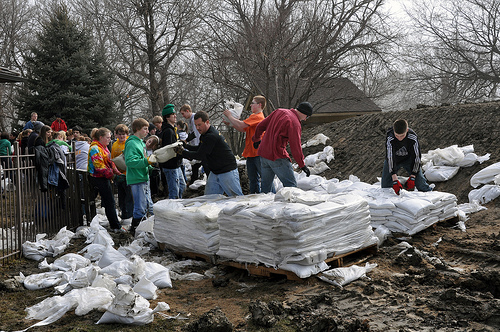 Communities take care of things . . . that matter to them. That sentence, without the ellipses, made it into my notes from some conference in the last year or so. I have no idea what conference. That’s one of the big problems with a life lived in conference sessions and without adequate notes.
Communities take care of things . . . that matter to them. That sentence, without the ellipses, made it into my notes from some conference in the last year or so. I have no idea what conference. That’s one of the big problems with a life lived in conference sessions and without adequate notes.
The statement has been staring at me, gnawing at my mind from the series of legal pad pages that serve as home to blog post ideas, for months. Communities come together in times of disaster to take care of each other. They support individuals and families in times of extreme difficulty (the extended severe illness of a child, for example). They rally to protect a park, even a venerable old tree. They sometimes try to assist the independent bookstores threatened by extinction first by mega-bookstores and then by Amazon. (The success of these efforts varies widely, of course.) And sometimes, they work to support arts organizations in trouble. My Bright Spots post highlighted a couple of interesting examples.
But the arts organization as recipient of an outpouring of community support is relatively rare. The ones cited in “Bright Spots” had committed themselves to community involvement, so the community was simply returning the favor. Typically, arts organizations’ traditional supporters will respond to in extremis calls for help, but the broader community that does not see itself as directly benefiting from the symphony, ballet, theatre, or museum will not turn out when severe need arises. Put baldly, the reason is that, to those outside the arts stakeholder circle, the arts organizations do not matter.
I guess this is the same root as the lack of passion for public funding and grassroots fundraising or wide support for arts education. Communities will take care of things that matter to them. But “things” must make an effort to matter if they are to matter. Community engagement, community involvement is good for arts organizations. In purely utilitarian terms, it’s self-interested. I’d like to appeal to higher purposes in advocating for engagement–and I do elsewhere. But if communities do take care of things that matter to them, the path to that care runs through mattering.
Engage! It’s for your own good.
Doug
- Photo:
 Some rights reserved by USACEpublicaffair
Some rights reserved by USACEpublicaffair

Hi Doug –
Thanks for this post. Very interesting.
After puzzling it for a bit, my instinct is to draw the conclusion that the arts are not actually treated so differently from the other categories of crisis/need you mention. Communities, as you note, respond effusively to extreme crises (a very sick child, a natural disaster, a park or a tree slated for extermination, an arts organization on the brink of bankruptcy).
I would argue that this is the kind of work communities are best suited to mobilize around – concrete, discrete, and urgent. Whereas slower, more complex problems – like the ones facing many arts organizations – require a more nuanced, leveraged strategy. Perhaps it’s less that the arts “do not matter” to their communities and more that the problems facing the arts provide fewer concrete and urgent opportunities for the communities to participate in the response.
I also wonder whether outpourings of community care in any category are actually relatively rare – though distorted by the amount of coverage stories they might get in the media – and that the arts are perhaps not so unique in the infrequency of real community engagement of this kind.
Of course, I have no data to support my hunches here! I would be very be curious to know if the research is out there to suggest that truly urgent arts crises are responded to with less attention than other kinds.
Thanks Doug! Intriguing as always!
Karina Mangu-Ward
Director, ArtsFwd.org
http://www.ArtsFwd.org